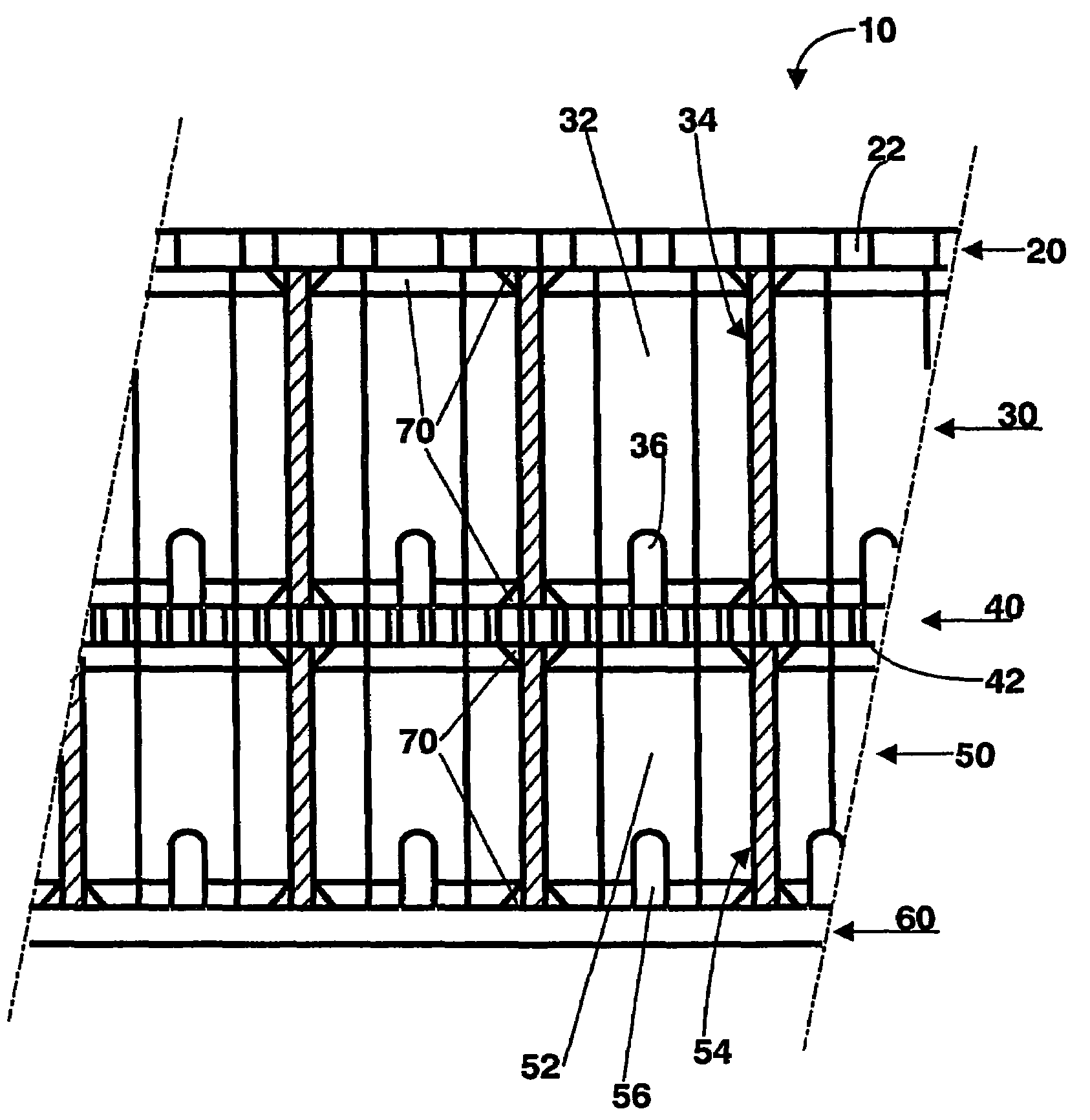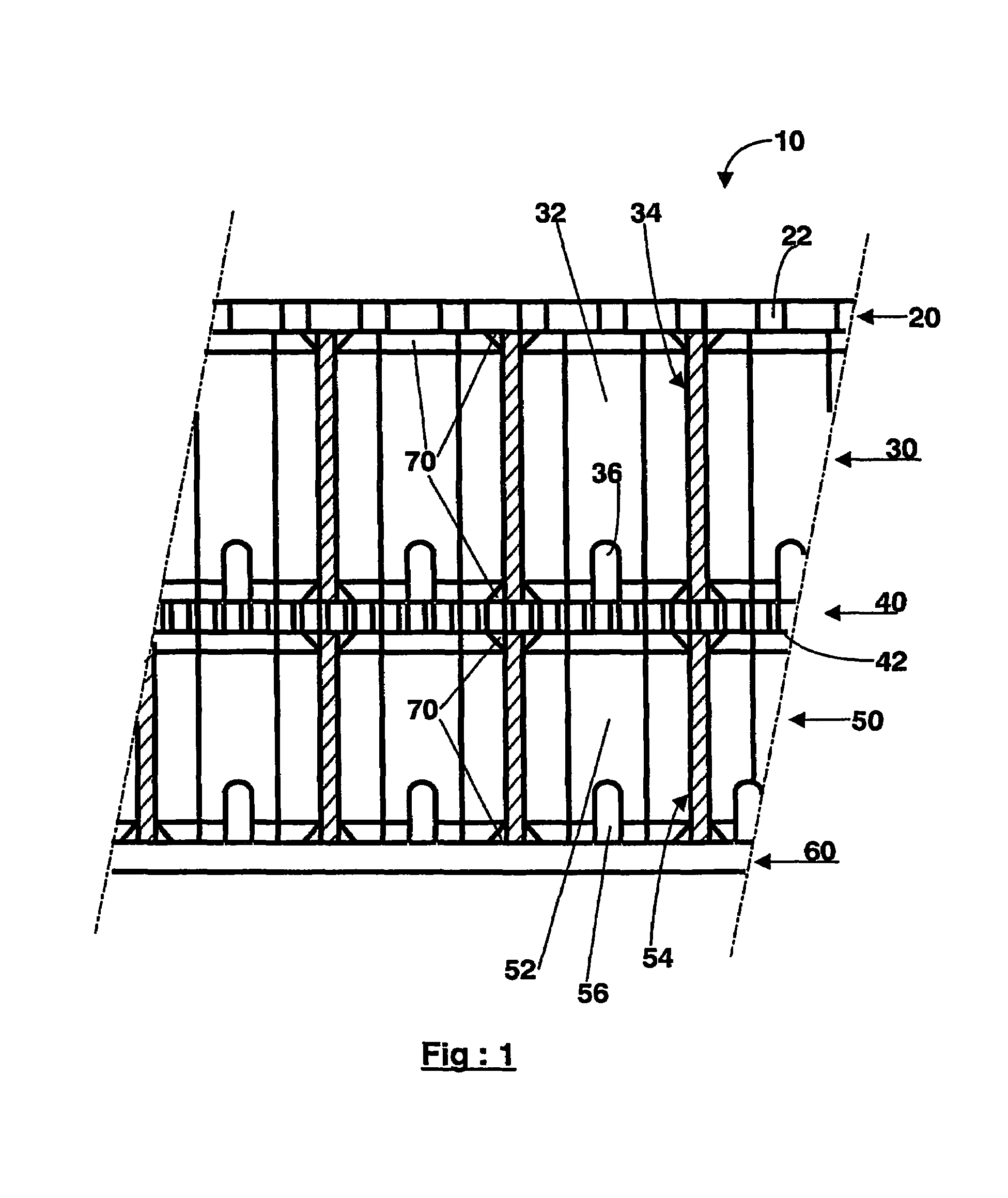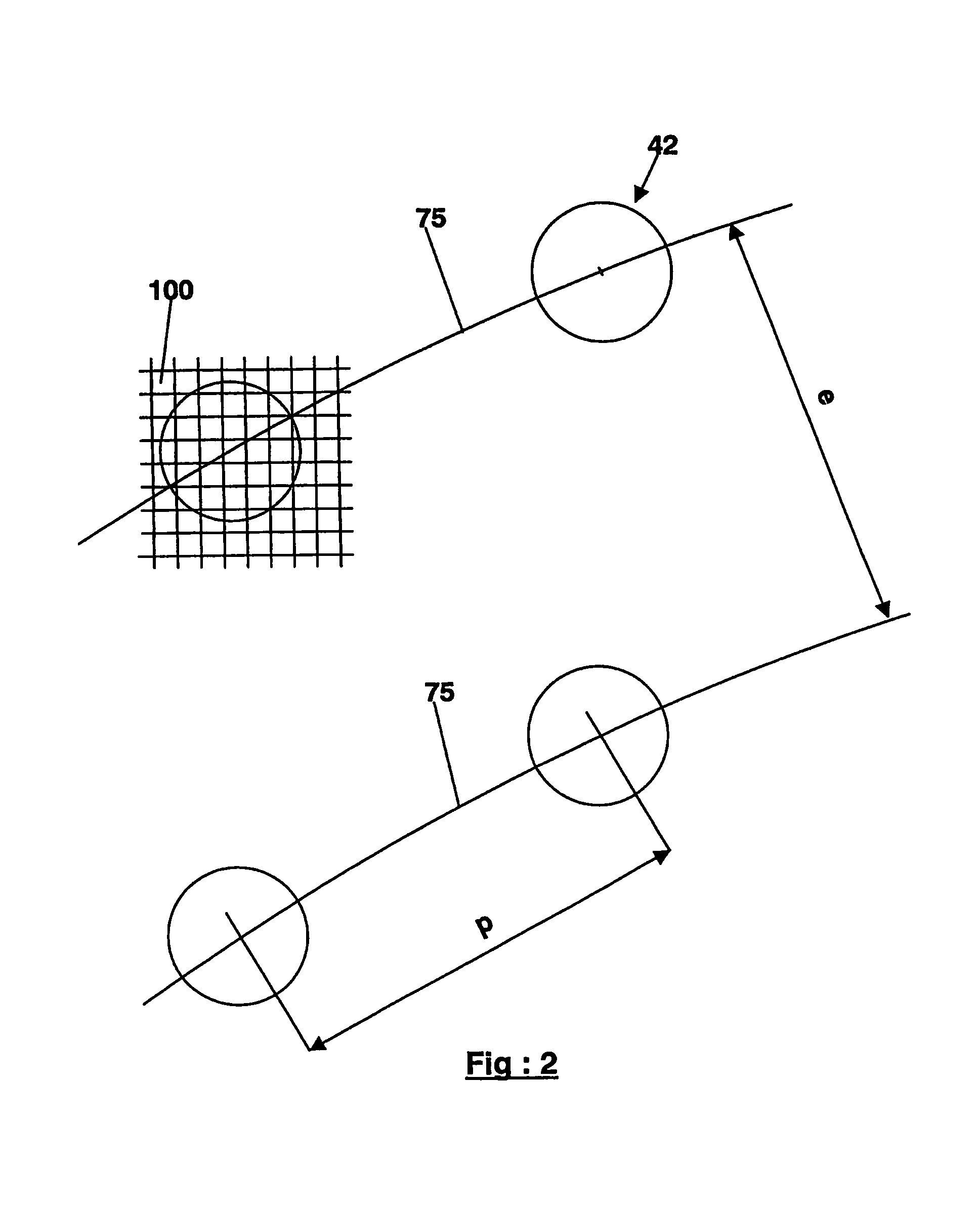Method of assembling and monitoring an acoustic panel comprising a double resonator with a honeycomb core
a technology of acoustic panels and honeycombs, which is applied in the direction of sound producing devices, lamination apparatuses, lamination ancillary operations, etc., can solve the problems of unsuitable use for the intended use, change the acoustic properties of the panels, and the geometry of the honeycombs is unfortunately imprecis
- Summary
- Abstract
- Description
- Claims
- Application Information
AI Technical Summary
Benefits of technology
Problems solved by technology
Method used
Image
Examples
Embodiment Construction
[0034]Reference will be made first of all to FIG. 1. The acoustic panel 10 is a laminated structure consisting of the assembly of various layers in the direction of the thickness, namely successively: an acoustic skin 20, a “primary” honeycomb 30, a septum 40, a “secondary” honeycomb 50, and finally a solid skin 60.
[0035]The acoustic skin 20 is usually made of composite material with an organic matrix consisting of five to fifteen layers of reinforcing fabric (not shown), these fabrics being embedded in a polymerization-cured resin, these fabrics usually consisting of glass, carbon or Kevlar fibers. The acoustic skin 20 is pierced with holes 22 in a regular mesh pattern, their diameter being around 1 mm to 3 mm, the degree of perforation, that is to say the ratio of the total area of the holes 22 to the area of the acoustic skin 20, being around 15 to 25%.
[0036]The primary honeycomb 30 consists of adjacent cells 32 oriented in the direction of the thickness of the honeycomb 30, thes...
PUM
| Property | Measurement | Unit |
|---|---|---|
| diameter | aaaaa | aaaaa |
| diameter | aaaaa | aaaaa |
| width | aaaaa | aaaaa |
Abstract
Description
Claims
Application Information
 Login to View More
Login to View More - R&D
- Intellectual Property
- Life Sciences
- Materials
- Tech Scout
- Unparalleled Data Quality
- Higher Quality Content
- 60% Fewer Hallucinations
Browse by: Latest US Patents, China's latest patents, Technical Efficacy Thesaurus, Application Domain, Technology Topic, Popular Technical Reports.
© 2025 PatSnap. All rights reserved.Legal|Privacy policy|Modern Slavery Act Transparency Statement|Sitemap|About US| Contact US: help@patsnap.com



